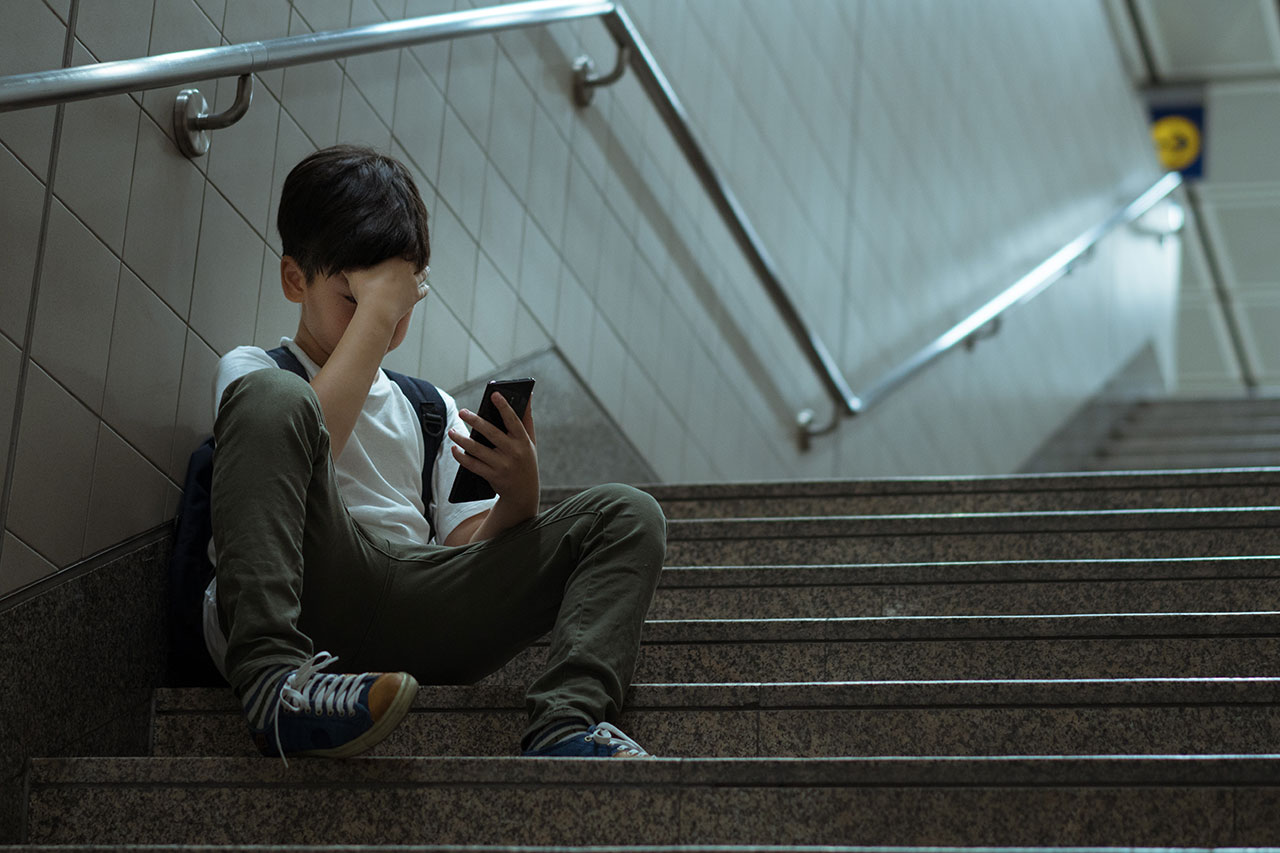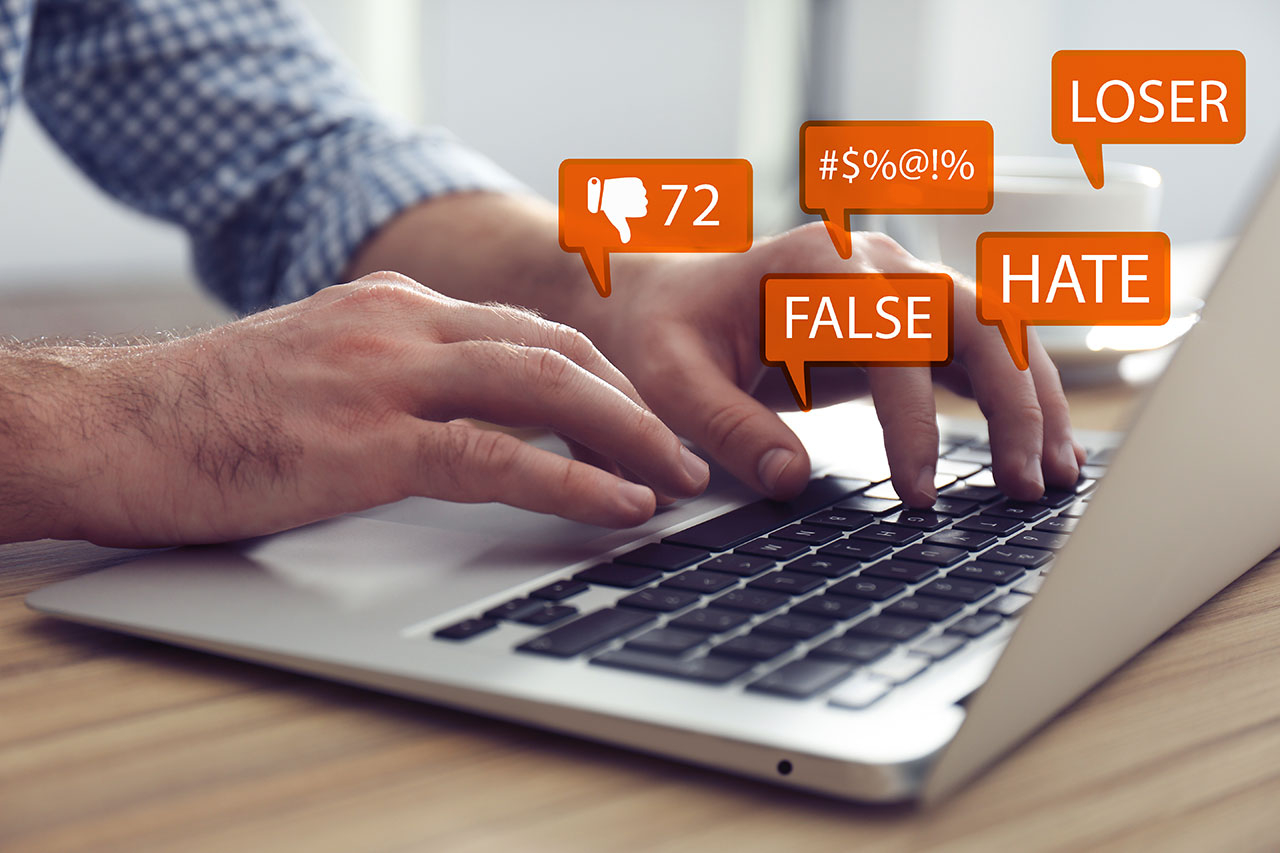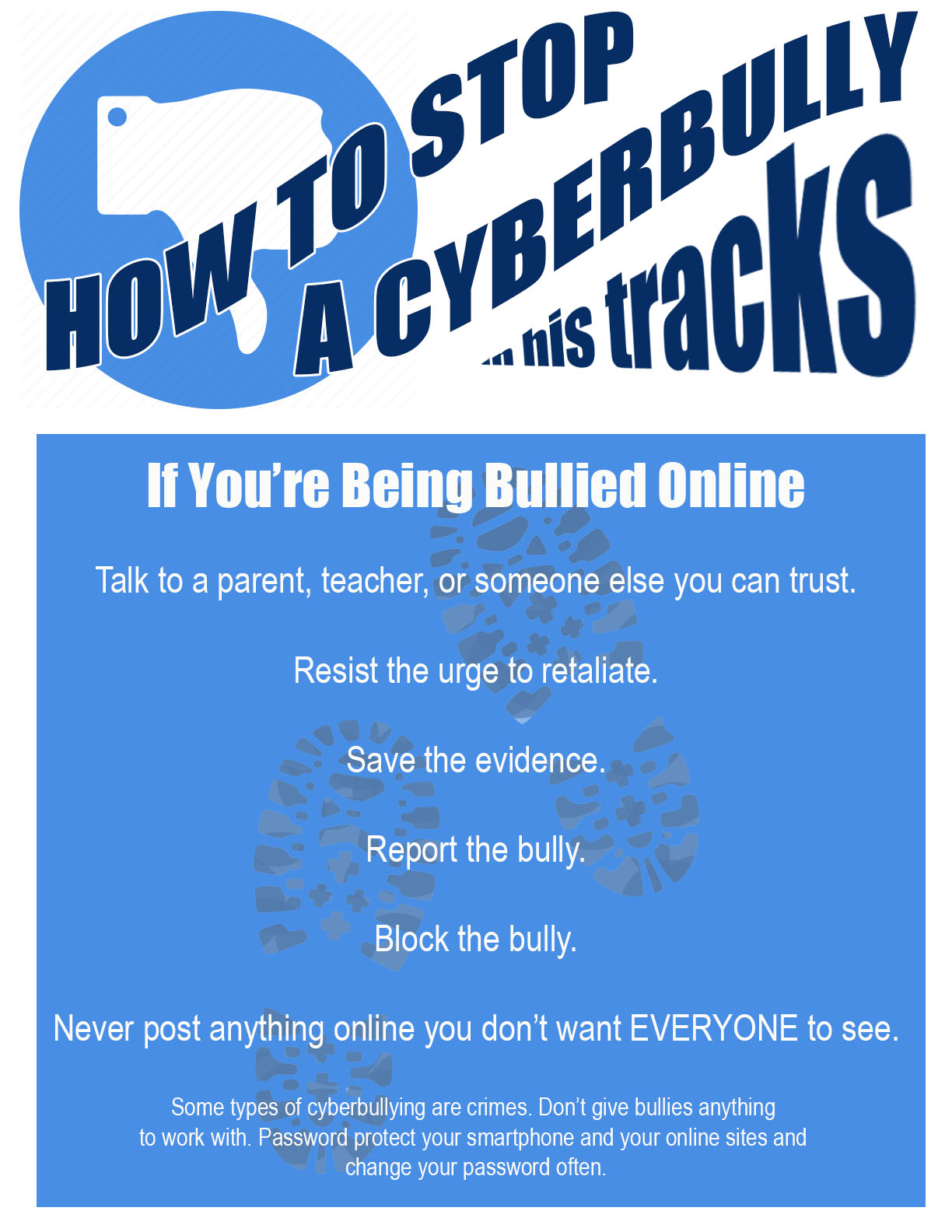It’s a new age and bullying has made inroads into our children’s lives at home as well as at school. Cyberbullying is perhaps the more insidious and dangerous form.

What is “cyberbullying”?
It is amazing to older generations—who may be struggling with technology themselves—to see toddlers attached to a digital screen on Momma’s phone while she shops for groceries. As a babysitter, technology can be wonderful—or deadly.
Cyberbullying is using digital devices like cell phones, computers, and tablets to post negative, harmful, false, or mean content about someone else. Sharing personal or private information about others can go far beyond embarrassment or humiliation; it can cross into unlawful and criminal behavior—no matter how old the perpetrator is.
Social media and digital forums offer perfect strangers the opportunity to view comments, photos, posts, and content shared by our children. This content creates a kind of permanent record, or digital reputation, that can later be accessed by schools, employers, colleges, clubs, and others who may use it as a source for determining your child’s future respectability and value.
Cyberbullying includes the following major problems.
- It is persistent. Since cyberspace never shuts down, digital devices let children communicate 24 hours a day. Therefore, children experiencing cyberbullying can never find relief from the harassment.
- It is permanent. Unless someone reports the information and gets it removed immediately, it quickly spreads throughout cyberspace so that it is impossible to delete it. This can affect a child’s future schooling or employment opportunities.
- It’s hard to notice. Parents and teachers may not see or hear cyberbullying taking place.

How prevalent is cyberbullying?
There are two federal databases that track bullying.
- The 2019 School Crime Supplement to the National Crime Victimization Survey (National Center for Education Statistics and Bureau of Justice) reported that in 2019, about 22 percent of students ages 12–18 reported being bullied at school during the school year, which was lower than the percentage reported in 2009 (28 percent). But in 2019, about 16 percent of students in grades 9–12 reported being electronically bullied during the previous 12 months.
- The 2019 Youth Risk Behavior Surveillance System (Centers for Disease Control and Prevention) indicates reports of cyberbullying are highest for middle schools (33%), followed by high schools (30%), combined schools (20%), and primary schools (5%).

How are cyberbullying tactics different from direct bullying?
The tactics cyberbullies use are potentially more harmful than direct bullying witnessed by others. Online, the whole world becomes the witness but no one is held accountable. This makes it infinitely more powerful and damaging. Instead of listing tactics, it may be more useful to give examples.
- Nude photo sharing.
During the time a teenage girl was dating her boyfriend, she sent him a nude picture. When they broke up, he decided to share the photo with other kids. Potentially, sexual predators have access to this photo, too. The kids said hurtful, derogatory things via text and social media. The predator decided to stalk her. - Lies and false accusations.
Students who got together and got drunk accused someone who knew nothing about it of reporting the incident to the school administration. They and other kids posted hateful things about her on social media and texted her at all hours. Those who read the texts and posts joined in, spreading the false accusations further. Even though she got a new phone and deleted her social media accounts, harassment at school continued. - Exposing economical hardship.
A clique of well-to-do students posted negative comments about another student on his social media account. They ridiculed him, labeling him “poor” and “stupid” because his clothing wasn’t as fashionable as theirs. This transferred to bullying at school when other students laughed and made derogatory comments about and to him. In an attempt to avoid the humiliation, the boy missed a lot of school which consequently impacted his grades. - Creating a “sockpuppet” (a false identity)
One student created a fake social media account as a boy which she used to strike up a relationship with another classmate. The “boy” sounded so good that they formed an “online relationship” which led to the girl sharing personal information about herself and her family. The classmate who created the “sockpuppet” used the information to harass, intimidate, and humiliate the girl. - Encouraging self-harm or suicide.
A student who had undergone many surgeries to correct a physical disability and who carried several scars was harassed by text and on social media by other students. They laughed at him, calling him demeaning names and told him everyone would be better off if he were dead. This was followed—as his classmates saw the posts—by someone writing “why don’t you kill yourself?” on his locker with a permanent marker. The taunts and posts online turned sinister as they encouraged the boy to commit suicide. - Bullying for being different.
An openly gay student started getting death threats by text, phone, and social media for being gay. Some of his classmates created an anti-gay social media group that gained momentum harassing him and posting hateful messages to and about him. - Jealousy bullying.
A girl who was dating a boy another girl liked was intimidated and threatened by the jealous girl and her friends. They spread rumors about her and lied, saying that she had told them things about the boy that were untrue. - Doxing.
A boy expressed his displeasure with the features of a certain game on social media. A competitor who didn’t like the comments searched online for the boy’s personal information, posting it alongside the negative comments about the game. Other players began threatening him by text and social media, trying to get him banned from playing the game. They flagged his posts as untrue and his account was banned by the game site.

What to do when cyberbullying affects your child’s school life.
Kids may consider your concern “meddling,” but keeping your child safe online is a parent’s job. If you notice warning signs that your child might be involved in cyberbullying, investigate. The bullied child should be supported and the bullying behavior must be taken seriously. This is no time to use the old adage “sticks and stones may break my bones but names will never hurt me”; it is no longer true. Here’s a game plan that does work.
- Take notice. If you see a change in your child’s behavior or mood, find out why. Does it occur right after the child has been online?
- Talk. Ask questions. Try to get your child to tell you what is going on, when and how it started, and who is involved.
- Document it all. Keep a record of what is happening, when and where. Use screenshots to record harmful posts whenever possible. Because bullying by definition is repetitive behavior, records help show that bullying is taking place.
- Report it right away. When cyberbullying is being done by a classmate, report it to the school. Most schools have clear policies and reporting policies. Apps and social media platforms also usually have clear policies regarding bullying. Report offensive content and ask to have it removed. If physical threats or illegal behavior is happening, report it to the police. Waiting to report cyberbullying gives it time to migrate to other platforms and devices.
- Intervene and support. Peers, mentors, and trusted adults have more influence than they realize to positively influence the situation. Posting positive comments about the targeted child and shifting the conversation to a positive direction can be effective. Express your concern to the bullied child and seek to determine if more professional help is indicated, such as speaking to a guidance counselor.

It’s up to us all.
Just because it’s not your child involved in cyberbullying doesn’t mean it doesn’t involve you. When my youngest daughter was in kindergarten, a teacher used different kids to ridicule publicly, turning classmates against the “chosen one.” Although my daughter was never the recipient, she lived in constant fear that her day was coming.
Becoming an upstander instead of a bystander.
A bystander is someone not involved who witnesses bullying. Upstanders take action when they see bullying. Bullied children often think they are alone and no one is on their side. They may think that your silence is agreement with the bullying. The support of even one person can turn the tide. Try these steps.
- Question the bullying behavior. Redirecting the focus can stop the progression.
- Use humor without making fun of the bullied child to redirect the conversation.
- Strength in numbers applies here, too. A group of upstanders can show that not everyone agrees with the bully.
- Associate with the bullied child. Walk with him, sit with her, involve them in conversations. This often diffuses the situation.
- Let the bullied child know (privately) that you care and are there for them.
- Be someone’s hero. If you can help a child struggling with a new language or new customs to fit in, you strengthen not only the bullied child but the child’s family, too. Check out the Be Someone’s Hero video in English or Spanish on You Tube.



